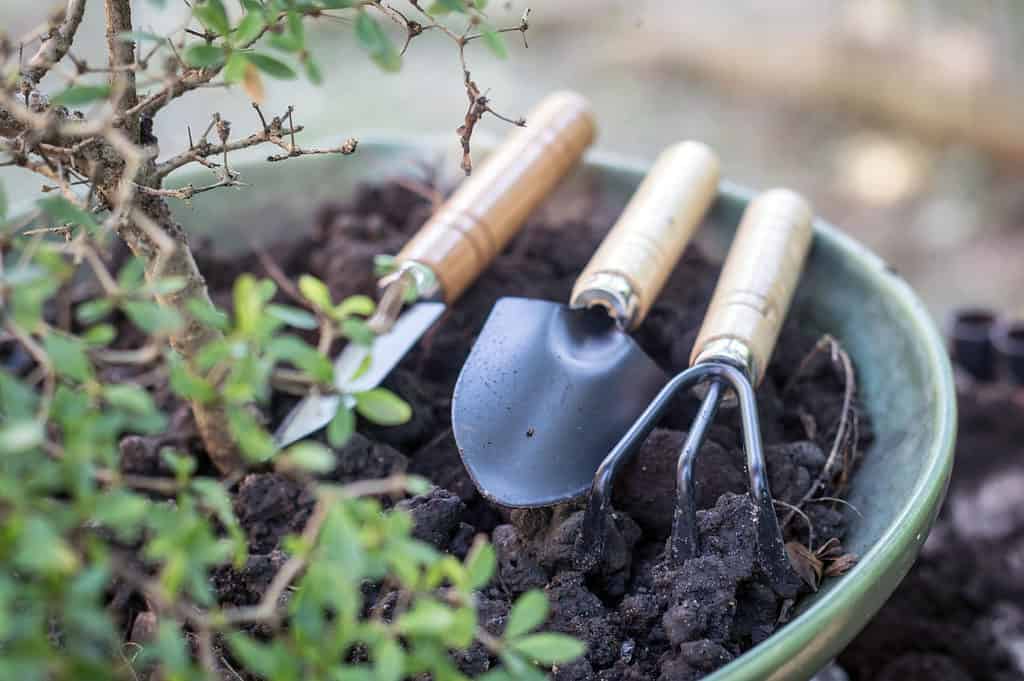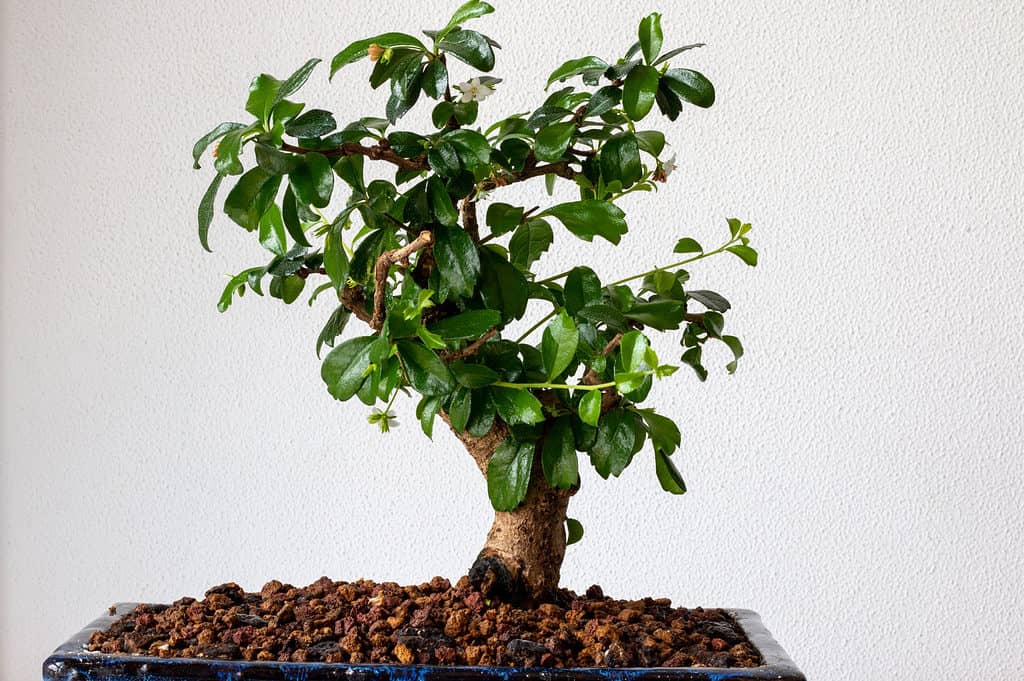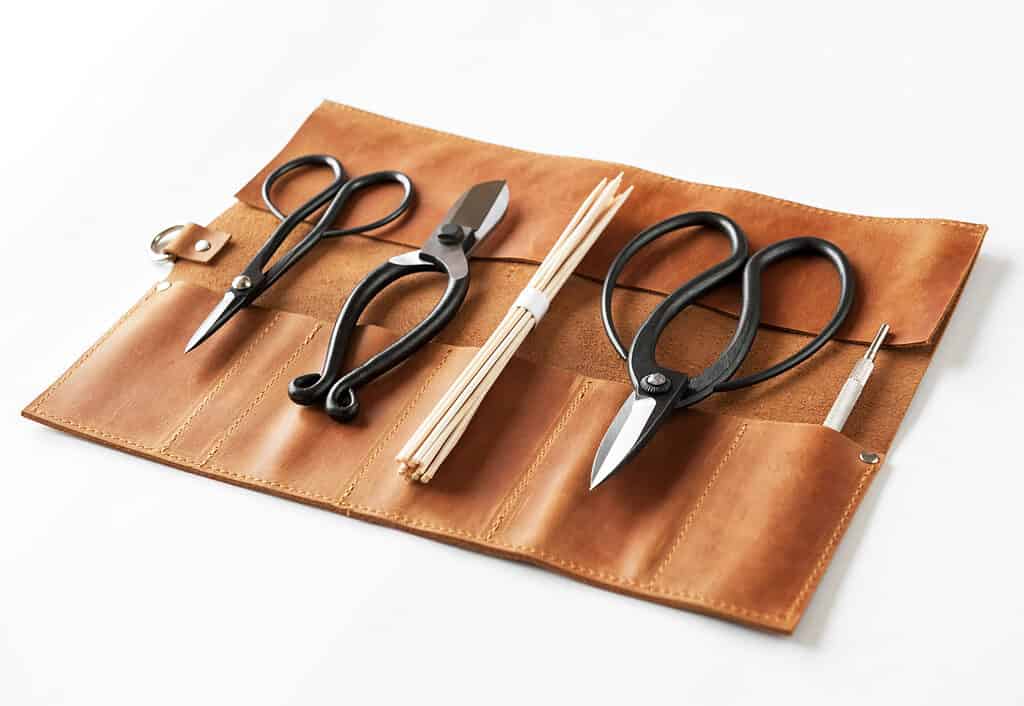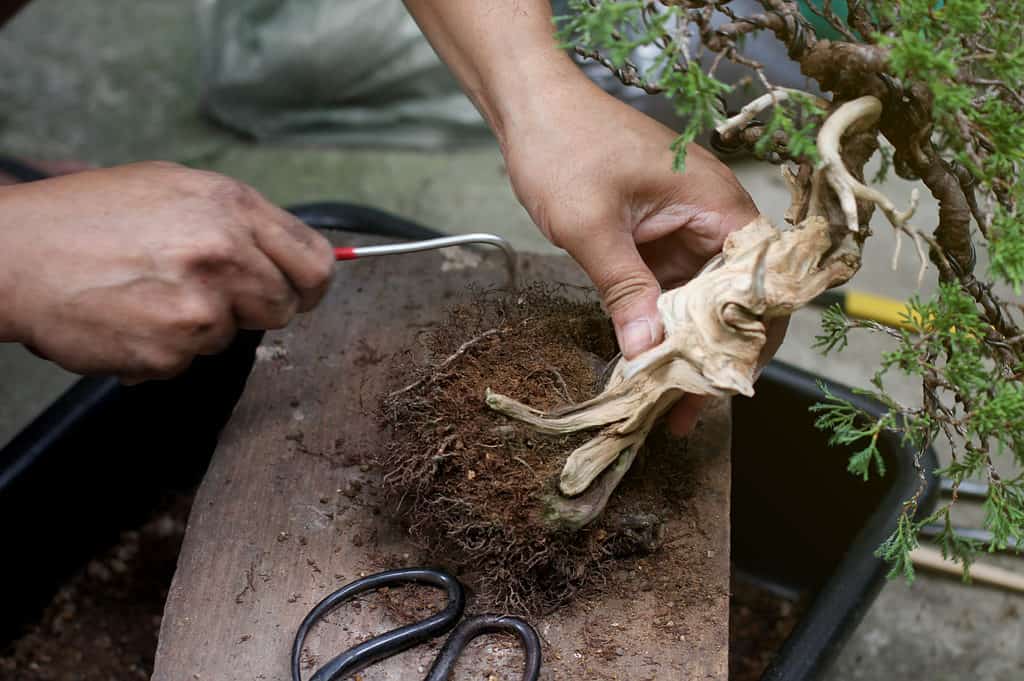Given the fact that trees need plenty of nutrients in order to thrive, you’ll need to repot a Bonsai tree quite a few times. Capable of living hundreds of years with proper care and maintenance, Bonsai trees are unique and rely entirely on you for their health. That’s why knowing how and when to repot your Bonsai tree is key to helping it grow. But why is repotting Bonsai trees important and how can you best accomplish the task?
In this article, we will go over everything you need to know about Bonsai tree potting and repotting. From the tools you’ll need to get the job done as well as the type of soil you should consider, repotting these miniature landscapes can take some practice. Let’s talk about how to get the job done, from beginning to end.
Why Should You Repot Bonsai Trees?

©wonderisland/Shutterstock.com
No matter the size or type of tree you have, Bonsai trees need ample nutrients in order to grow. In fact, all trees need additional assistance when grown in a container, and this is especially true of Bonsai trees! Given that Bonsai trees are simply regular trees purposefully grown in miniature, their care and nutrient needs are the same as their full-size counterparts. However, Bonsai trees don’t have access to the same amount of nutrients given that they are bound to a container.
The purpose of repotting a Bonsai tree is to not only encourage your tree to grow larger but also to revitalize and restore nutrients to your specimen. As time passes, the limited amount of soil and food found in your Bonsai tree’s container runs out. It consumes all available nutrients in a surprisingly short amount of time. If left in the same container for too long, your Bonsai tree will slowly perish from a lack of nutrients!
Repotting any plant also gives you a good opportunity to inspect its roots. The roots of your Bonsai tree are indicative of its overall health and wellness. Not only can you manipulate your tree’s roots to aid in your design, but you can also restore your Bonsai tree’s natural growth habits by repotting its roots carefully!
When Should You Repot Bonsai Trees?

©Gheorghe Mindru/Shutterstock.com
As with wiring and pruning, repotting any type of Bonsai tree requires good timing. You need to repot your specimen with special attention paid to the time of year as well as any other work that you have done to it. For example, if you performed a lot of heavy-duty pruning earlier in the year, it isn’t recommended that you repot your tree in the same year.
Most experts recommend early spring as the perfect time to repot your Bonsai tree. Watch your specimen carefully as winter winds down. Before your tree’s buds open but as the weather warms, repot your tree. While some tree species are best repotted in the fall, early spring works well for the majority of Bonsai trees.
Winter and summer are not ideal times of year for repotting Bonsai trees (though some indoor tropical varieties can handle summer repotting!), as the energy of your tree is directed elsewhere. Your specimen will not have enough energy to bounce back from a process as stressful as repotting, something to keep in mind as the year progresses. Early spring is key, as this is when your tree will be investing energy into its foliage and root systems.
Tools for Bonsai Tree Repotting

©Marcos PR/Shutterstock.com
If you haven’t already purchased tools for Bonsai trees, you’ll definitely want to pick some up before repotting. There are a number of specialized tools to help you accomplish your repotting mission, and most of these tools are specifically made for Bonsai trees! Here are some of the ones you’ll need to get any repotting job done.
Root Sickle
Designed to free a compacted root ball from its pot, a root sickle is an important tool in Bonsai tree repotting. You never want to yank your tree from its pot without first loosening the soil around it. The natural curve of a root sickle may help you get into your Bonsai tree’s pot and gently carve it out without harming the roots or trunk of your specimen!
Small Stick or Rake
Used to remove any old soil from the roots of your tree, there are tiny rakes designed for Bonsai tree care and repotting. If you don’t want to worry about finding one of these specialized rakes, a simple small stick such as a chopstick or dowel can help you get the job done. However, it may take a bit more time and effort when compared to the swiftness of a miniature rake!

©Olena Antonenko/Shutterstock.com
Wire Cutters
Many Bonsai trees are secretly attached to their pots with wire. This helps create an added sense of stability, especially when you consider just how shallow most Bonsai tree pots are. However, this means that you’ll likely need wire cutters to assist you in the repotting process.
Root Shears or Pruning Shears
You can use a variety of different types of shears or scissors to prune the roots of your Bonsai tree. While you shouldn’t prune too many roots from your specimen (more on that later!), repotting often involves a bit of root maintenance as well. Make sure your shears are sanitized before making any cuts to your delicate tree!
Wire and Wire Mesh
Securing your tree to the bottom of its new pot is a good idea, especially if you are opting for a shallow choice. You’ll need wire to accomplish this, and attaching wire mesh to the drainage holes of your new pot helps prevent any soil lost through watering.
How to Repot a Bonsai Tree

©qSPOoKYp/Shutterstock.com
No matter the type of tree you have, repotting a Bonsai tree is a necessary part of its care. Here’s how to accomplish the task, step by step.
- Remove any wire keeping your tree in place. If you peek underneath your Bonsai tree’s pot, you may notice wire sticking out from its drainage holes. Cut this wire before doing anything else.
- Use your root sickle to remove your tree. Gently run your sickle around the outside edges of your tree’s soil. This will loosen it from the edges of the pot, allowing you to free it without yanking or pulling. Take your time with this process so that you don’t accidentally damage any roots!
- Inspect the roots of your Bonsai tree. Check for rot, damage, or compactness. Depending on the conditions of said roots, you may not need to repot your tree at all! However, if you notice your roots are extremely compacted and that there is very little soil visible around them, it’s time to repot.
- Rake away any old dirt. Using your stick or root rake, gently remove the old soil from the bottom and sides of your Bonsai tree. Take extra time during this process, and keep in mind that some tree species will require you to leave some of the old soil still attached. For example, some evergreens are symbiotic with soil fungi, keeping all parties involved healthy and happy!
- Trim roots with care. Repotting is a great opportunity to help form your Nebari or surface roots. No matter what you want to accomplish, you should trim no more than 25-35% of your tree’s roots. Longer, vertical roots are the best ones to trim, as shallow, horizontal root growth is best for Bonsai trees.
Moving to a New Home
- Prepare your pot. Add your mesh and wire to your drainage holes, threading the wire up and through the pot so that you can attach it to your tree. Make sure your pot has been sanitized and fully dried before beginning this process.
- Add your soil. Starting with a layer of rocks or clay, carefully add your planting medium to your pot. There are a number of soil components that help Bonsai trees thrive; check out our guide below!
- Add your tree. Plant your tree into its new home and attach the security wire to it. Cover your tree with soil, taking care to ensure that there are no gaps surrounding the roots.
- Soak the soil. Once your tree is covered and secure, water it thoroughly. This will ensure a proper filling in of any and all gaps and give your tree the necessary nutrients to get it through this potentially shocking process.
Tips and Tricks for Repotting a Bonsai Tree

©Bernd Schmidt/Shutterstock.com
Curious about what you might need to know before attempting to repot your miniature tree? While we’ve addressed some of these things in passing, here are the tips you should definitely keep in mind before you repot any type of Bonsai tree!
Repot with the Seasons
Bonsai trees are dependent on you for their health and wellness, but outdoor Bonsai trees are still at the mercy of the seasons. Even indoor Bonsai trees can behave in a seasonal way, redirecting their energies depending on the time of year. Repotting is an extremely stressful process for trees. Knowing when they have plenty of energy to bounce back from repotting is key.
If you own a tropical or indoor-exclusive Bonsai tree, you may be able to repot any time of the year. However, many tropical plants, such as ficuses, are best repotted in the summertime when their growth is heightened. Outdoor trees are quite different, however. You’ll need to repot most outdoor trees in early spring, likely during March or April depending on where you live.
Soil is Everything
As you’ll likely learn in our soil guide (located below), Bonsai trees rely exclusively on the soil that they are given. This means that you want to provide your tree with the best soil possible when repotting. Choosing a well-balanced mixture is key, as well as deciding on a mixture based on your local climate and tree species. Some trees need better drainage than others, or your local climate may be naturally humid. Regardless, never skimp on your Bonsai tree’s soil!
Know Your Species
As previously mentioned, the species of Bonsai tree that you have directly influences when and how you should repot it. Some pine trees need a small amount of their old soil carried over into their new home. In contrast, many fast-growing trees need repotting more often. Being aware of what species of tree you have is paramount to successful repotting.
Choose Your New Pot Carefully (Or Use the Same Pot!)
While you may have a few different Bonsai tree pots in mind for your future repotting, it’s important to select a new pot with care. Likewise, you may not want to change pots for your tree, opting for root trimming and repotting in the same vessel. This is commonly done, especially with older trees that are kept at a particular size.
Regardless of what you choose, you should always keep your Bonsai tree in a shallow and complementary pot. You don’t want your pot to distract from the design of your tree. Nor should you plant your tree in a pot too large! There are many different rules and suggestions for choosing Bonsai tree pots, from their size and materials of it. Do plenty of research, especially on the tree species you have and how quickly it grows.
While repotting Bonsai trees shouldn’t happen yearly, practice and patience are key to the success of this process. While it may be stressful, learning how to repot your tree is key to keeping it healthy and happy!
Up Next:
- The Best Soil for Bonsai Trees
- How to Properly Place a Bonsai Tree
- Bonsai Styles: Everything You Need to Know
The post How to Repot a Bonsai Tree appeared first on AZ Animals.
from Animal News, Facts, Rankings, and More! - AZ Animals https://ift.tt/ik80ABu